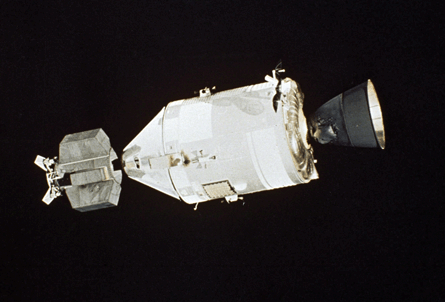Leading spacefaring nations have achieved a long-sought step towards a common spacecraft architecture with agreement on a new standard for docking systems.
International Space Station partners have published details of the International Docking System Standard (IDSS), which allows a range of compatible, but not necessarily identical, mechanisms for spacecraft docking.
The IDSS builds on the heritage of the Russian-developed Androgynous Peripheral Attachment System (APAS) system used for "hard docking" of the Space Shuttle, and on the innovative soft-capture features of new NASA and European Space Agency systems. Other agencies will be free to choose specific features behind the interface.
Speaking on the sidelines of last month's Brussels ministerial conference on space exploration, ESA human spaceflight director Simonetta Di Pippo described the work by ISS representatives from the USA, Europe, Japan, Canada and Russia as a key milestone in creating a truly co-operative future approach to space travel. Writing the standard took a series of meetings held every six weeks or so over the course of 18 months.
 |
|---|
© The USSR Academy of ScienceApollo-Soyuz docking required a special module (left) |
From now, all new spacecraft, including NASA's Orion crew capsule, will be built to IDSS specifications. Di Pippo readily admits that a standard docking system should have been agreed years ago, noting that ESA's Automated Transfer Vehicle cargo ships, for example, can only dock with the Russian-built modules at the ISS.
She adds that ESA, which has been working for a number of years on an international berthing docking mechanism and is prepared now to make it IDSS compatible.
Summing up the mood at the Brussels ministers meeting, Di Pippo says the ISS must be the focus of an international effort to maximise the scientific and technology development benefits of each nation's space exploration programme.
"The IDSS is an outstanding example of international collaboration. It sweeps away the boundaries for a truly global exploration endeavour. It will also make joint spacecraft docking operations more routine and eliminate critical obstacles to joint space exploration undertakings," she said.
The new standard is a far cry from the first great milestone in international spaceflight co-operation, the 1975 US-Soviet joint orbital mission. Docking then was achieved via a special module that fit between the US Apollo and Soviet Soyuz spacecraft.
The technical teams from the five ISS partner agencies will continue to work on additional refinements and additions to the initial standard. ESA, NASA, Roscosmos, the Japan Aerospace Exploration Agency and the Canadian Space Agency are represented on the Multilateral Coordination Board, which co-ordinates station activities among the partners.
Source: Flight International






















